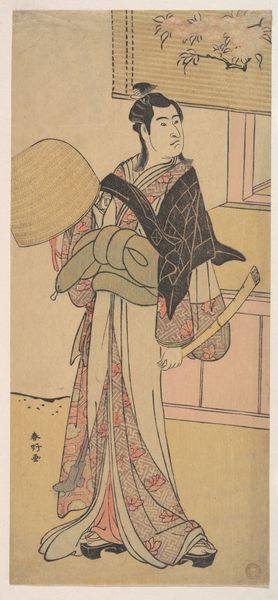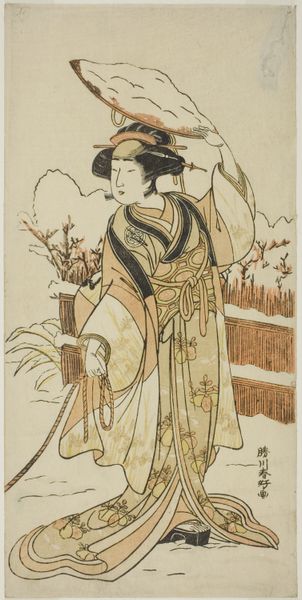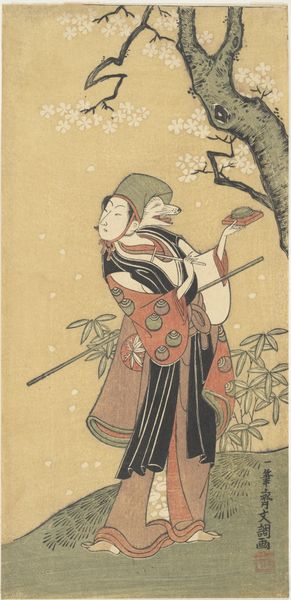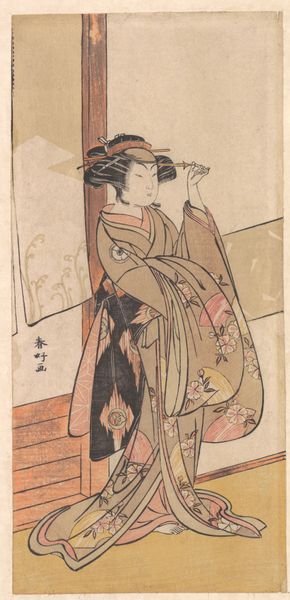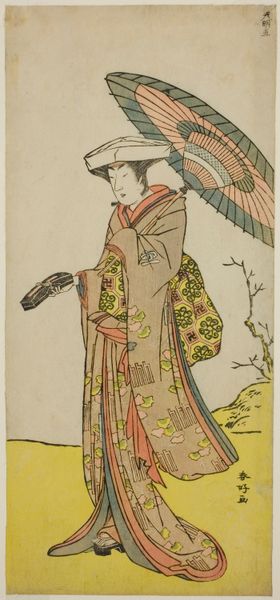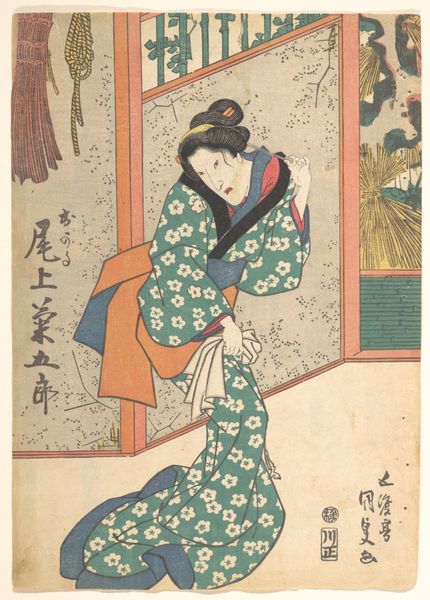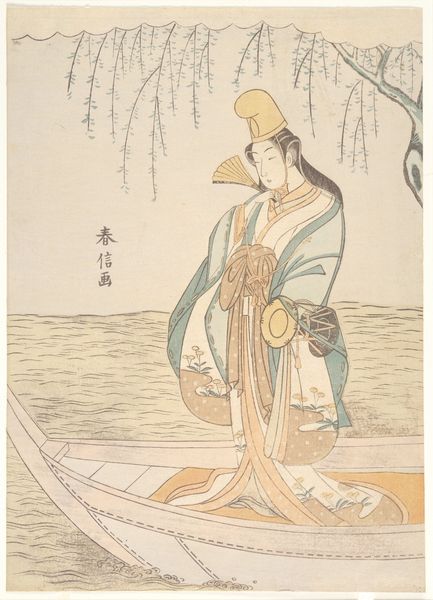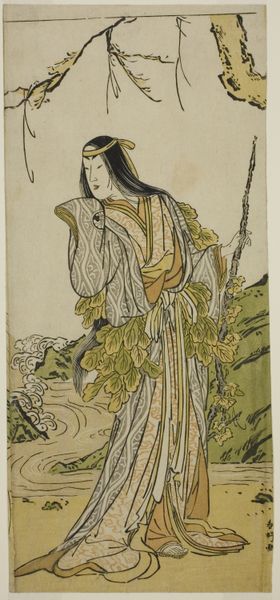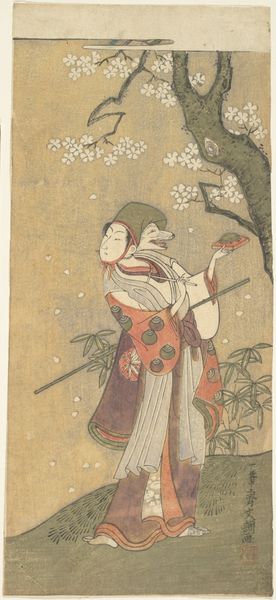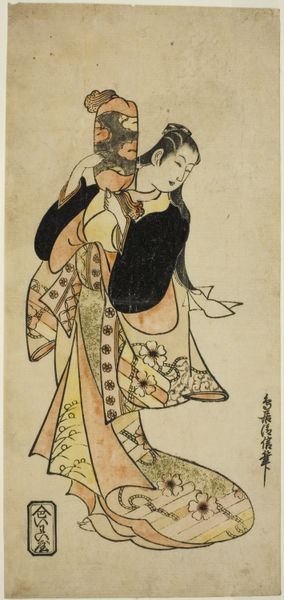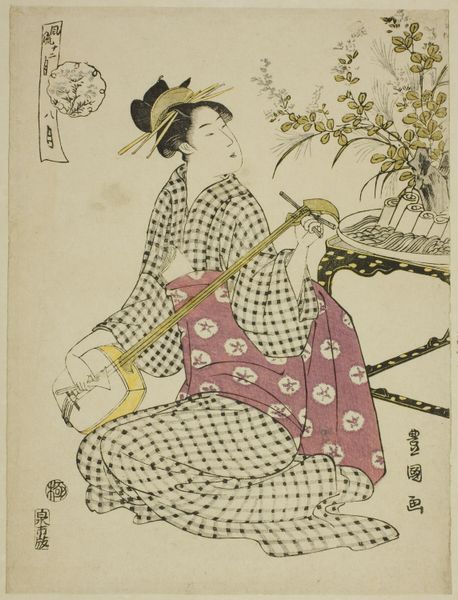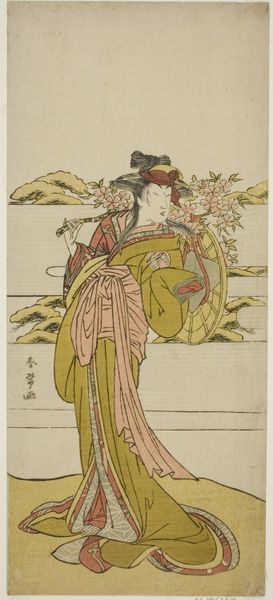
print, woodblock-print
#
portrait
# print
#
asian-art
#
landscape
#
ukiyo-e
#
woodblock-print
#
genre-painting
Dimensions: Hosoe: 11 3/4 x 5 5/8 in. (29.8 x 14.3 cm)
Copyright: Public Domain
Curator: This woodblock print immediately strikes me as remarkably delicate, with a subdued, almost dreamlike quality to the colors. Editor: Indeed. This is "Arashi Otohachi I," created by Ippitsusai Bunchō between 1780 and 1800. It’s part of the Ukiyo-e tradition, now housed at The Metropolitan Museum of Art. Curator: The rendering of Otohachi’s garments fascinates me. That flowing yellow robe and patterned under-robe contrast starkly with the realistic rendering of the fish hanging from his belt, prompting a tension between artifice and material culture. Editor: We must remember the context. Ukiyo-e prints like this were hugely popular in Edo-period Japan. They functioned as both art and commodity, accessible to a broad public and reflective of contemporary tastes and theatrical trends. How did this popularity inform its construction? Curator: The method of woodblock printing allows for a very high volume of copies, which lowers the threshold for accessibility and distributes images widely through social strata. The labor of the artisans who reproduced these images is critical; did they innovate or merely replicate according to artistic directions? Editor: It is worth exploring the role of theaters and their performers. Kabuki actors like Arashi Otohachi became celebrities, and prints like these circulated their image, fueling their fame. One might wonder what was the process for commissioning these prints, what contracts where in place to share revenues, what relationship dynamics dictated these creative artifacts? Curator: Notice the texture imparted by the woodblock—how it gives depth and character to the otherwise flat planes of color. We should also discuss the types of pigments, dyes, and paper that contributed to this image. Their sourcing and methods for longevity all feed into the creation of this work. Editor: Considering the print's journey to the Met, what trajectories—private collections, auctions, institutional acquisitions—did it follow? What did it mean for this imagery to become ‘high art’? How did western audiences change, receive, or distort the meaning of this Japanese artifact through collecting? Curator: Indeed, a multitude of decisions regarding labor, commerce, and presentation contribute to its aura and legacy. Editor: Yes. By engaging with the object's historicity and its physical properties, we gain insight into its cultural legacy.
Comments
No comments
Be the first to comment and join the conversation on the ultimate creative platform.
